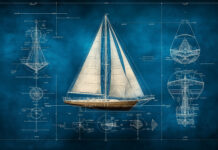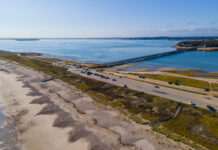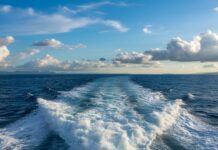
Read about some recent memorable days on the water here:
- Your Survival Guy: JAWS, Woods Hole and YOU
- Your Survival Guy: “You Wouldn’t Have Liked It”
- Your Survival Guy’s Boat-Shoes-on-the-Docks View
- Your Survival Guy Finally Got in the Boat
Read below and remember that you cannot predict the future of the ocean, the weather, or markets, no matter how much data you have. So it’s best to be prepared for any situation you might encounter.
Originally posted on July 18, 2025.
Your Survival Guy’s had some memorable and not so memorable days on the water. There was that time when a college friend and I were motoring home on my family’s sailboat, the Sunset, and we ran out of diesel just as we got through Woods Hole. Without a choice, we sailed home in the fog. When we tied up to the mooring. My friend asked, “Who’s that standing on the beach?” “My dad,” I said. “Good thing you’re here.”
One time while anchored in 15 feet of water on the Tom Sawyer, a friend asked the length of the boat, and I said, “30 feet.” “Well, that’s good,” he said. “If we sink, we’ll still have this much boat above water,” pointing to the middle part of the boat. Good luck with that I said.
One time, when my dad told my friend to throw over the anchor so we could go quahogging, he tossed the whole thing, line and all, overboard.
Another rule is “Red right return,” which means keep red channel markers to your right or starboard side when returning to a harbor.
Another is that the starboard boat has the right of way. As does a leeward boat when traveling in the same direction. But beware, not everyone knows the rules or pays attention to them. Smaller boats have the right of way. Good luck with that. “Get out of the way” is always a good rule to live by.
In speaking with Dick Young yesterday morning, he asked, “Survival Guy, when was the last time I spoke with you about sector weighting and industry weightings in constructing a stock portfolio?”
“Never,” I said. “You never talk about that.”
“Exactly,” he said. “I’ve always felt it’s more art than science.”
Which brings me to the tools that help us navigate the water. Yes, it’s nice to have technology: chart plotters, radar, and sonar, to name a few. But at the end of the day, it comes down to what you see or don’t see that helps you judge the conditions or risk.
In the fog, the chart plotter is still crystal clear, even though you can barely see the bow of the boat. The radar is helpful, but it can’t tell you the wave height or wind speed. At the end of the day, it comes down to you making good decisions.
Action Line: When you want another hand at the helm, I’m here. Email me at ejsmith@yoursurvivalguy.com.



